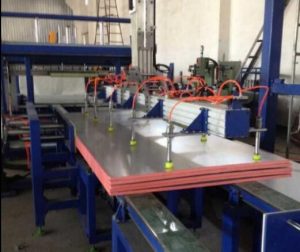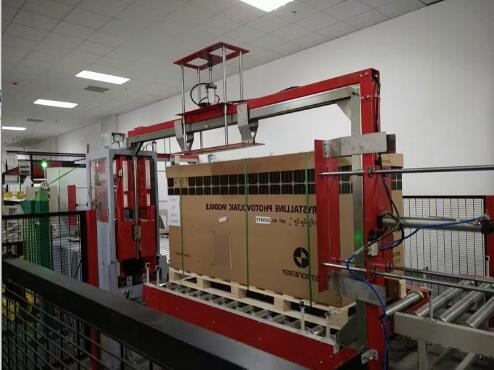Automated Board and Panel Handling & Stacking Solutions for Enhanced Efficiency
Handling large, heavy, or numerous boards and panels manually presents significant challenges in manufacturing and warehousing environments. Issues include risks to worker safety, potential material damage, and operational inefficiencies. An automated board and panel handling and stacking solution addresses these challenges directly, streamlining workflows and improving overall productivity.
Understanding Automated Board and Panel Handling Systems
These sophisticated systems are engineered to optimize the movement, handling, and storage of large volumes of boards and panels. They integrate advanced conveyance mechanisms, precision lifting devices (like vacuum lifters or grippers), and intelligent stacking technologies specifically designed for various material types and sizes, including:
- Plywood and Oriented Strand Board (OSB)
- Drywall and Gypsum Board
- Sheet Metal (Steel, Aluminum)
- Plastic Sheets
- Furniture Components
- Composite Panels
Equipped with sensors and automated control systems (typically PLC-based with HMI interfaces), these solutions ensure accurate positioning, gentle handling to minimize scratches or damage, and consistent stack formation. The robust, often modular design allows for customization to meet specific operational needs, including variable speeds, different stack patterns, and integration with existing production lines.
Key Benefits of Automation

Implementing an automated handling and stacking solution offers substantial advantages:
- Increased Efficiency: Significantly reduces cycle times for moving and stacking panels compared to manual methods.
- Enhanced Safety: Minimizes manual lifting of heavy or awkward items, reducing the risk of musculoskeletal injuries. Integrated safety features like light curtains and emergency stops further protect personnel.
- Reduced Material Damage: Automated precision handling minimizes scratches, dents, and breakage often associated with manual handling.
- Optimized Labor Utilization: Frees up workers from repetitive manual tasks to focus on more value-added activities.
- Improved Space Utilization: Creates neat, stable, and potentially higher stacks, optimizing warehouse or floor space.
- Consistency: Ensures uniform stacking patterns and handling processes, leading to predictable workflow and quality.
Technical Specifications Overview
Please Note: The parameters listed below are indicative. For exact specifications matching the equipment shown in the video or tailored to your specific needs, please contact us for detailed information.
- System Type: Fully Automated Board/Panel Handling and Stacking
- Compatible Panel Dimensions:
- Length: Typically up to 3000mm (customizable)
- Width: Typically up to 1500mm (customizable)
- Maximum Load Capacity: Example: Up to 2 tons (varies by design)
- Maximum Stacking Height: Example: Up to 2 meters (adjustable based on requirements)
- Conveyor Speed: Adjustable, typical range up to 60 meters per minute
- Power Requirements: Commonly 380V, 50Hz, 3-Phase (adaptable to regional standards)
- System Control: PLC (Programmable Logic Controller) with Touchscreen HMI (Human-Machine Interface)
- Key Safety Features: Integrated sensor systems (photoelectric, proximity), physical guards, emergency stop circuits, warning indicators.
- Frame Material: Heavy-duty structural steel for durability.
Industry Applications
Automated board and panel handling solutions provide significant value across various sectors:
Furniture Manufacturing
In high-volume furniture production, these systems drastically cut the labor needed to move and stage large wood or composite panels. They ensure panels are stacked precisely, reducing lead times and minimizing damage risk during processing (e.g., feeding CNC routers or edgebanders).
Construction Material Supply
Suppliers handling materials like drywall, insulation boards, or cement board benefit from efficient warehouse organization. Automation streamlines unloading, storage, and order picking, boosting throughput and making better use of valuable storage space.
Automotive Industry
The automotive sector uses these systems for managing large metal sheets or composite panels essential for vehicle bodies and components. Precision handling preserves the quality of these critical parts, reducing scrap and supporting efficient assembly line operations.

Wood Processing and Panel Production
Sawmills and panel mills utilize these systems for handling raw boards, intermediate products, and finished goods like MDF or particleboard, improving flow from production to warehousing.
Related Information: